I believe edible flowers are not given the attention they deserve. And the indisputable king of edible flowers has to be the nasturtium.
As ideal for brightening up a dull space as it is for adding life to a boring salad, nasturtiums are one of the best-loved edible flower varieties.
These colorful flowers grow quickly, happily, and easily, and they thrive in poor soils. This means they don’t need extra fertilization, or really any extra love at all – in fact, they are so easy to grow that they are often overlooked entirely by many gardeners.
I’m here to tell you that this is nothing short of a travesty!
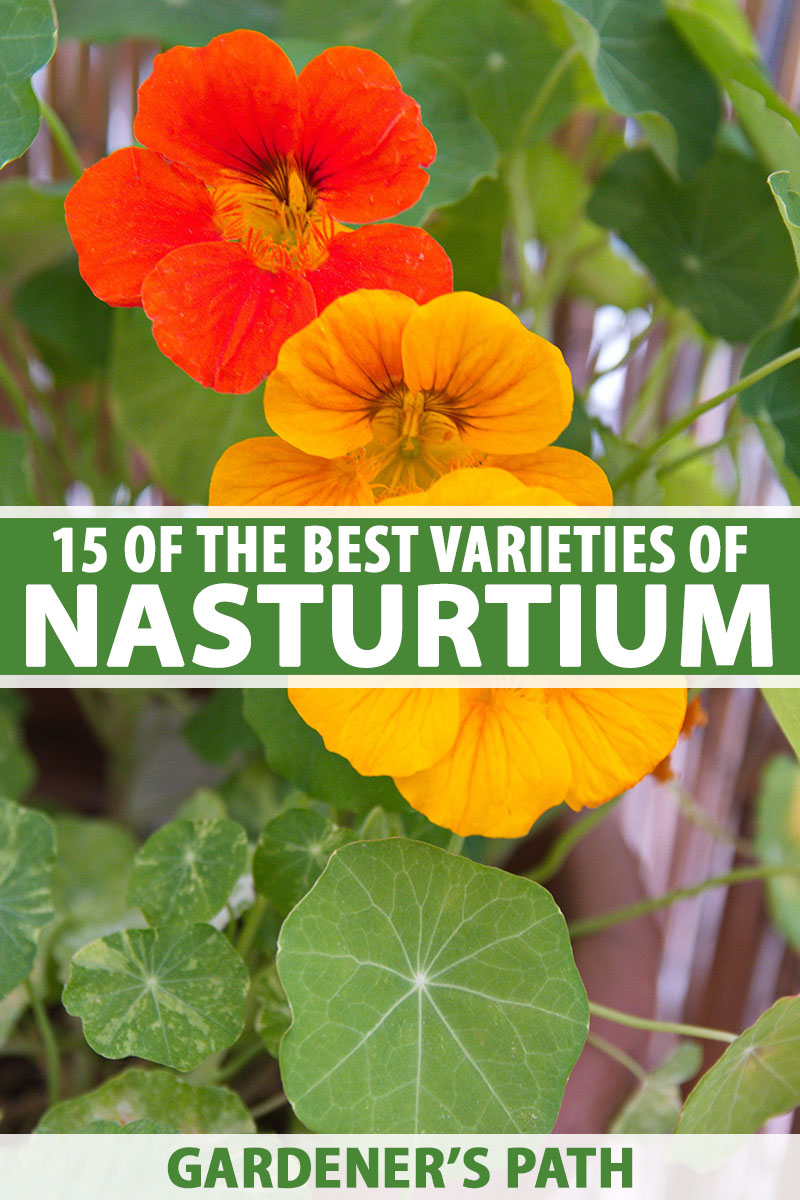
We link to vendors to help you find relevant products. If you buy from one of our links, we may earn a commission.
Although these flowers are most often grown as annuals, nasturtiums have been known to grow as herbaceous perennials in warmer climates, meaning they die to the ground in the fall and grow again the next spring.
Plus, even in cooler climates, they reseed readily.
So, these flowers are edible, elegant, and enduring? What’s not to love?
And that’s not all! They also come with the added bonus of being a natural pest repellent, helping to protect your other plants against unwanted visitors.
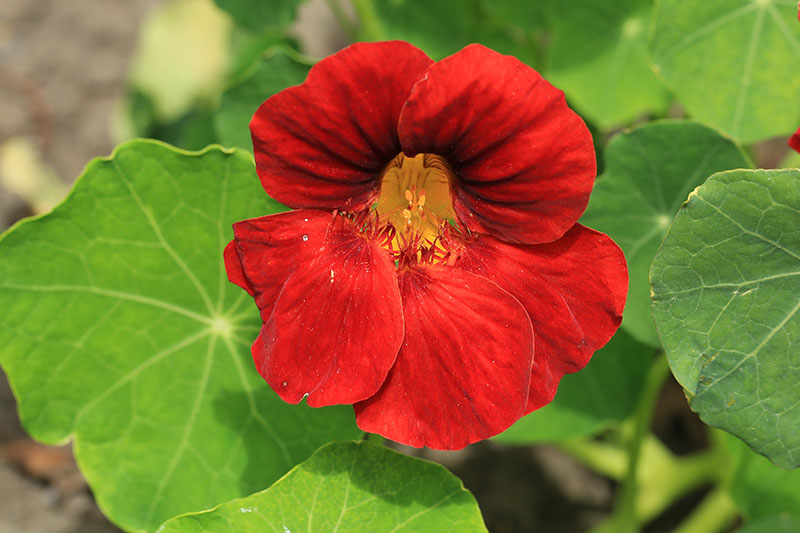
There are so many beautiful varieties of nasturtiums that it’s hard to pick just one.
Keep reading to learn about our top picks, a careful selection of the best and most beautiful nasturtiums on offer, and find out which type is the one for you!
15 Favorite Nasturtium Varieties
All nasturtiums belong to the genus Tropaeolum, which consists of roughly 80 species of annual and perennial herbaceous flowering plants.
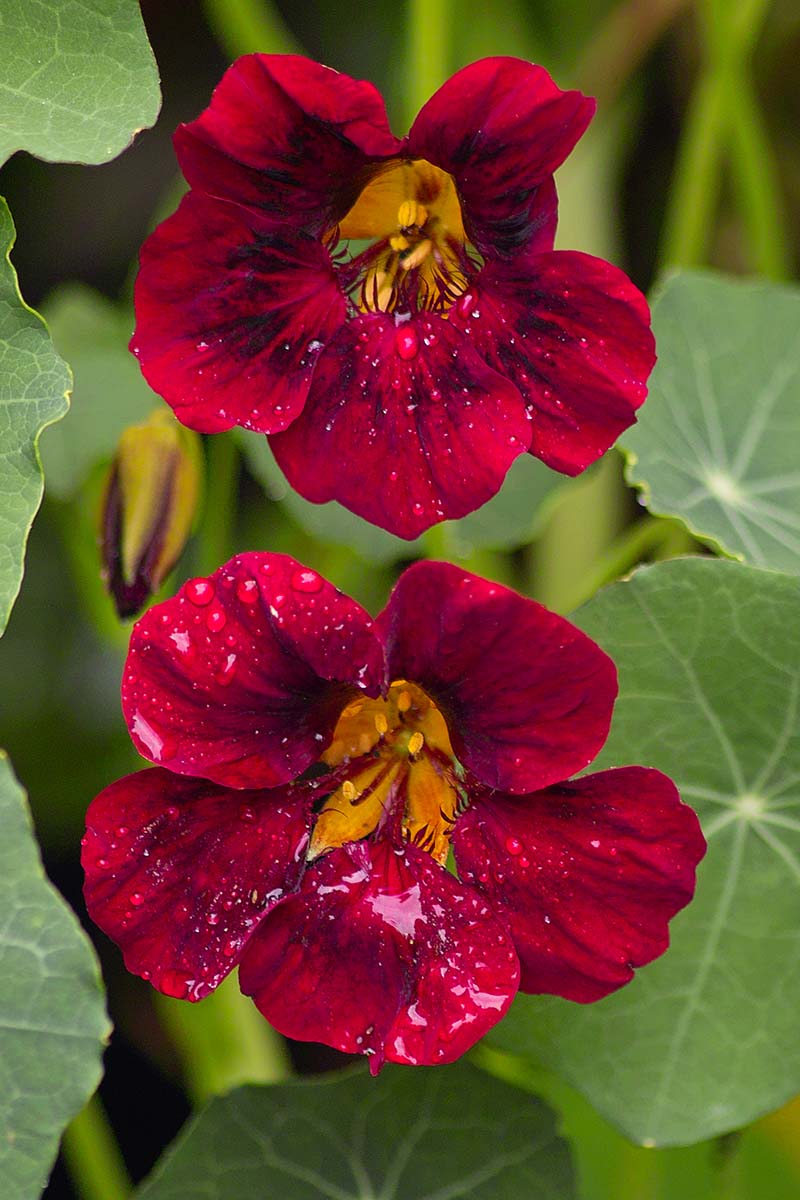
The nasturtium species most commonly known and loved by gardeners is T. majus, a hardy annual originating from the Andes Mountains in Bolivia and Colombia, although there are also several other well-known species, including T. peregrinum and T. speciosum.
You can read more about growing nasturtiums here.
There are a couple of considerations to keep in mind when choosing your nasturtium, the main one being whether you would prefer a trailing or bushy type.
Within the same species, both types may be available, so be sure to check the characteristics of each specific variety closely when you do your shopping.
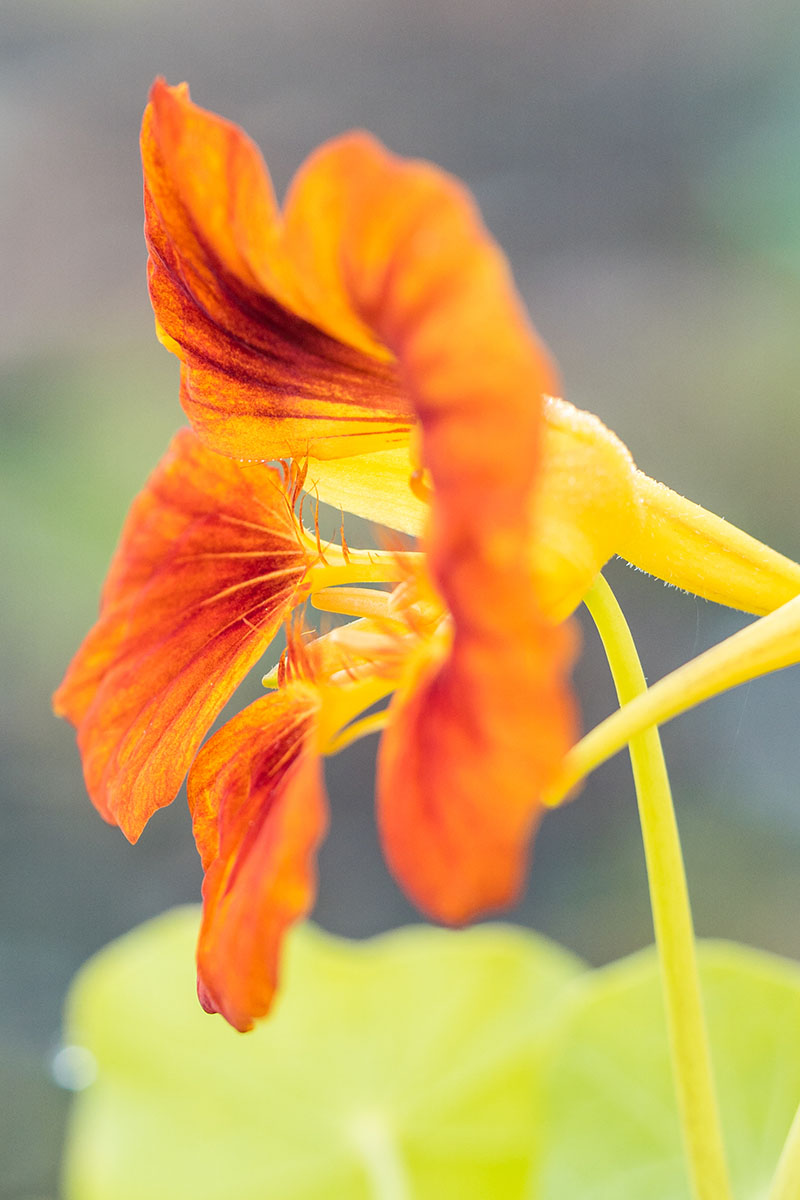
Trailing nasturtiums have larger blooms and leaves, although they don’t produce as many flowers as the bush varieties do.
They look great in hanging baskets, sprawling across a bed as a ground cover, or cascading over the edge of a planter. You can even sometimes train vigorous varieties to grow up a fence or pole.
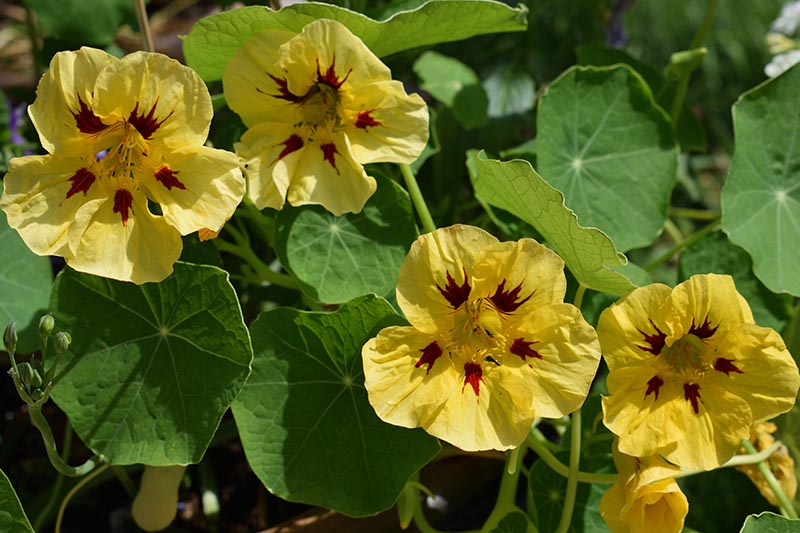
Bush-type nasturtiums, as the name suggests, grow in a compact, bushy habit that is more easily contained and well behaved.
This makes them ideal for window boxes and containers, or edging a path or border. You won’t have to worry about this type running rampant across your garden.
It’s important to bear in mind that these categories are not definitive, as some bush varieties trail a bit, and some trailers are less vigorous than others and almost bushlike.
Generally speaking, it’s important to consider the various types available on a case-by-case basis.
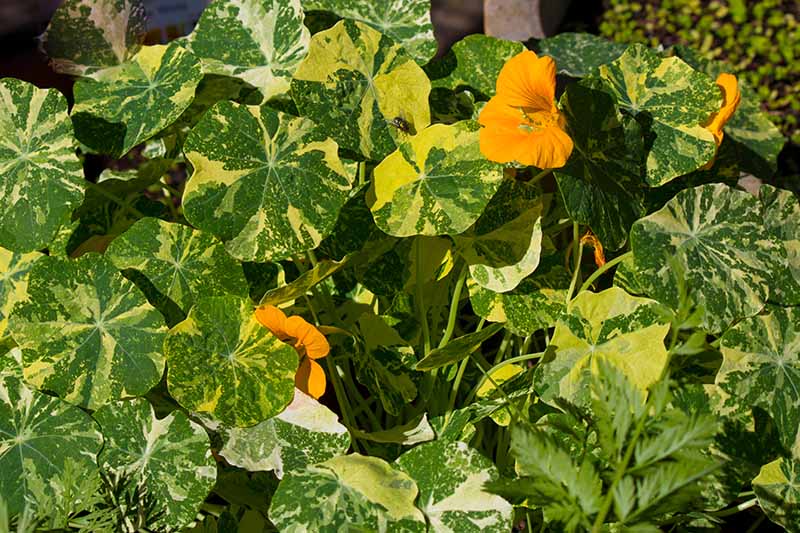
Other than that, it is worth noting that some varieties have especially beautiful variegated foliage, giving the plant a touch of extra interest even when it’s not flowering.
With so many delightful cultivars available, the most difficult part of writing this roundup has been narrowing down my list of favorites.
I could happily plant all of them in my garden – at the same time!
1. Alaska
With its green and white variegated foliage, this heirloom cultivar is a treat for the eyes whether it’s in bloom or not.
‘Alaska’ produces edible flowers in a mix of yellow, cherry, salmon, and crimson shades, ready to enjoy in 55 to 60 days.
With a mature height of 12 to 14 inches, this compact, bushy variety thrives in both full sun and partial shade. This is an adaptable and easygoing cultivar.
You can find ‘Alaska’ seeds in packets of various sizes available from True Leaf Market or at Burpee.
2. Apricot
Perfect for growing in borders or window boxes, ‘Apricot’ produces plants that lift their cheerful and uniquely apricot-colored flowers above bright green foliage.
Compact and bushy, this dwarf cultivar makes an attractive addition to any garden bed or container, and matures in 55 to 65 days.
This variety reaches up to 12 inches in height, and seeds are available from Eden Brothers.
3. Black Velvet
These blossoms are such a deep red that they appear almost black, making this type a magical and strikingly unique choice.
The flowers are made even more impressive via the stark contrast between their midnight-hued petals and bright yellow throats.
Another reason this is such a great pick is that it is a prolific bloomer, and you can enjoy ‘Black Velvet’ throughout the spring and summer.
This trailing type grows up to 12 inches in height, and matures 75 days after sowing.
Seeds are available in packets of various sizes from Eden Brothers.
4. Empress of India
The regal ‘Empress of India’ is a bushy, dwarf heirloom cultivar with a mature height of 16 inches.
Set against dark blue-green foliage, this variety produces long, spurred, two-and-a-half-inch edible scarlet blossoms, and matures in 55 to 65 days.
You can find your ‘Empress of India’ seeds from Eden Brothers and at Burpee.
5. Fiesta Blend
‘Fiesta’ Blend is sure to create a carnival of color in your garden!
The combination of orange, yellow, and bicolored flowers makes this such a fun cultivar – it makes me happy just to look at this cheerful color combination!
This low-growing variety prefers full sun, and can achieve a height of 10 to 12 inches, making it ideal for planting as a ground cover or in hanging baskets.
You can find ‘Fiesta’ Blend seeds in a variety of packet sizes at Botanical Interests.
6. Indian Chief
Growing up to 60 inches long with a trailing habit, ‘Indian Chief’ is an excellent climber. Bright red flowers with dark centers make a dramatic contrast against its dark green foliage.
This heirloom cultivar thrives in full sun, and makes a beautiful statement in beds and containers.
You can find seeds in packets of various sizes available from Eden Brothers.
7. Jewel Mix
‘Jewel’ is a trailing variety with brilliant, brightly colored blooms. Easy to grow from seed, it’s perfectly suited for various dry and temperate climates.
Mature in 54 to 63 days, ‘Jewel’ Mix seeds are extremely vigorous, making this an ideal choice for kids or novice gardeners to try.
Perfect for flower beds, fences, and walkways, I have also seen this variety grown in conjunction with beans, and it makes a perfect partner for running up a bean pole.
With two-and-a-half-inch blooms in shades of yellow, peach, carmine, and salmon, this nasturtium is also one of the most popular edible varieties, and it reaches a length of 18 to 24 inches at maturity.
You can find packets of seeds in a variety of sizes at True Leaf Market and from Eden Brothers.
‘Jewel’ is also available in a dwarf size, with a bushy growth habit – ideal for containers and window boxes.
Offering a range of two- to three-inch double-spurred flowers in yellow, red, and apricot, this seed mix grows best in full sun, and plants reach a mature height of 10 to 12 inches.
Seeds for the dwarf ‘Jewel’ Mix are available at Burpee and from Eden Brothers.
8. Orange Gleam
‘Orange Gleam’ is a trailing type, ideal for hanging baskets, ground cover, or trained up a trellis. Bright orange, scented, semi-double blooms will make a lively addition to the summer garden.
The ‘Gleam’ series was an All-America Selections Winner in 1935, and originated in a garden in Mexico in the 1920s.
‘Orange Gleam’ prefers a full sun location and will reach a mature length of 60 inches, blooming prolifically all summer long.
You can find seeds available in a variety of packet sizes at Eden Brothers.
9. Orchid Flame
‘Orchid Flame’ grows in a bushy, mounding habit, with a mature height of 12 inches.
The beautiful two-inch bicolored flowers, in golden yellow with vibrant red splashes, change color over the course of the season – becoming fully red in late summer.
A delightful addition to beds and borders, ‘Orchid Flame’ is also perfect for growing in containers on the patio, where you can enjoy the vivid colors. Plant in a full sun location for best results.
You can find packets of 50 ‘Orchid Flame’ seeds available at Burpee.
10. Peach Melba
You can certainly see where this variety gets its name. The sweet, delicate flowers are a beautiful creamy yellow color with vibrant red centers, which immediately reminds me of the inside of a clingstone peach.
As a compact, bushy variety, this heirloom is perfectly suited to life in the garden bed or a container. I also love its foliage, with a soft blue-gray color that is subtly beautiful and unique.
Growing up to 12 inches, unlike most nasturtiums, this variety is able to tolerate partial shade – but keep in mind that it does prefer to grow in the sun, and full sun is required to maximize the number of blooms that you get.
You can find seed packets in a variety of sizes from Eden Brothers.
11. Phoenix
The fiery ‘Phoenix’ is just the thing to reinvigorate your garden.
This semi-trailing cultivar is actually a rebirth of the heirloom ‘Golden Gem’ – not seen in seed catalogs since the early 1900s. What makes this variety so unique are its rare split-petaled, lightly ruffled flowers.
As the name suggests, these plants are adorned with flaming red-orange blooms.
This variety is recommended as a border plant, and it will reseed easily, reemerging from the garden beds year after year. It grows to 10 to 12 inches in height at maturity.
You can find packets containing 50 seeds available at Burpee.
12. Purple Emperor
Beautiful light purple blooms, with yellow throats, fade to lavender as the summer wanes.
Deep green foliage and a trailing form makes ‘Purple Emperor’ a regal addition to your garden borders or hanging baskets.
With a mature height of 16 inches, ‘Purple Emperor’ prefers a full sun location and is a delightful addition to any garden.
Find seeds in a variety of packet sizes available at Eden Brothers.
13. Vesuvius
A volcano of understated color erupts from ‘Vesuvius,’ with its delicate, salmon pink flowers that bloom prolifically all summer long.
This compact, bushy type has blue-green foliage and reaches a mature size of just 12 inches.
This heirloom cultivar dates back to 1908, when it first appeared in Burpee’s seed catalog.
Ideal for garden borders, containers, or window boxes, ‘Vesuvius’ prefers a full sun location and will mature in 60 to 80 days.
Seeds are available in packets of various sizes at Eden Brothers and from Burpee.
14. Whirlybird Mix
This seed mix is full of semi-double flowers in a rainbow of colors, from scarlet to pale yellow to golden tangerine.
This compact, low mounding variety tops out at 12 inches and matures in 55 to 65 days.
‘Whirlybird’ is ideal for patio containers and window boxes.
To give this cultivar a whirl, you can find seeds in a variety of packet sizes from True Leaf Market.
15. Yeti
This is the ultimate climbing nasturtium, with vines that can reach an impressive 80 inches in length. These vines are dotted with beautiful, delicate, creamy white and yellow blooms.
Tolerant of partial shade, this cultivar does prefer full sun exposure, and will mature in 60 to 70 days. ‘Yeti’ is ideal for training up a trellis or over an arbor, and looks beautiful in hanging baskets.
You can find ‘Yeti’ seeds available at Eden Brothers or Amazon.
Nothing’s Better Than a Nasturtium!
There’s no way that you won’t fall in love with these delightful, delectable, and durable flowers. With so many beautiful nasturtiums to choose from, you are sure to find one that suits you and your garden.
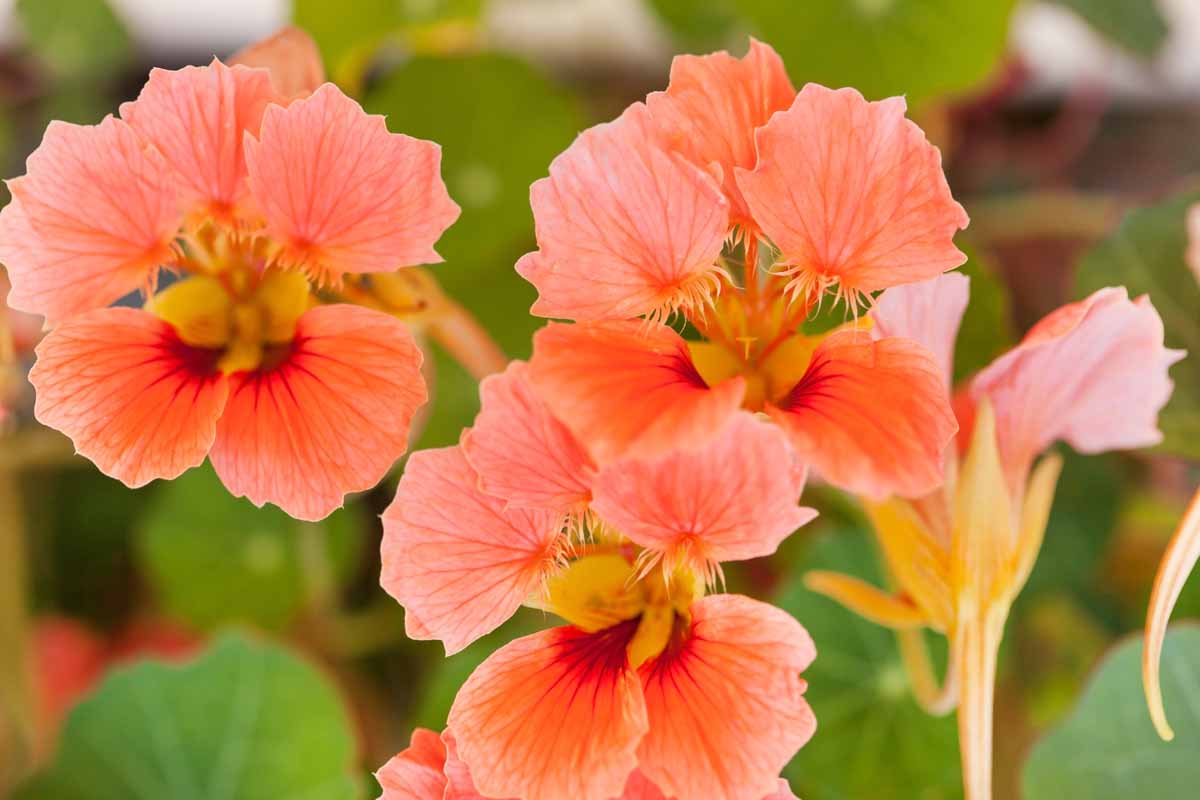
Have you had a go at growing these edible flowers at home? What’s your favorite way to use them in the kitchen, and your favorite variety? Let us know in the comments section below!
And to learn more about growing colorful nasturtium flowers in your garden, check out these guides next:

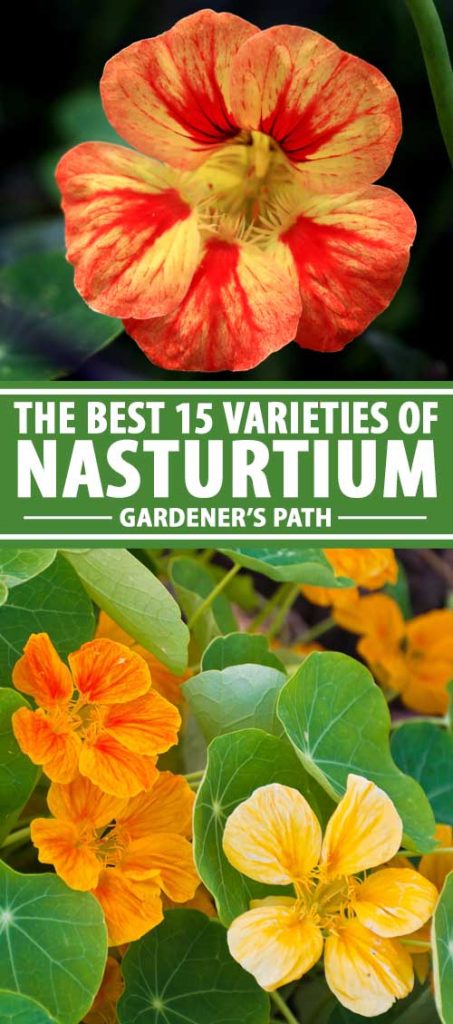

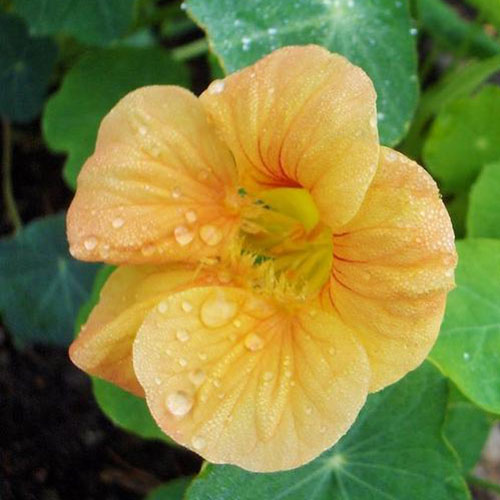
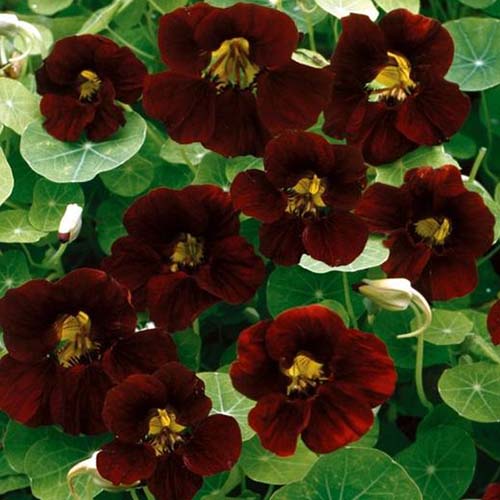
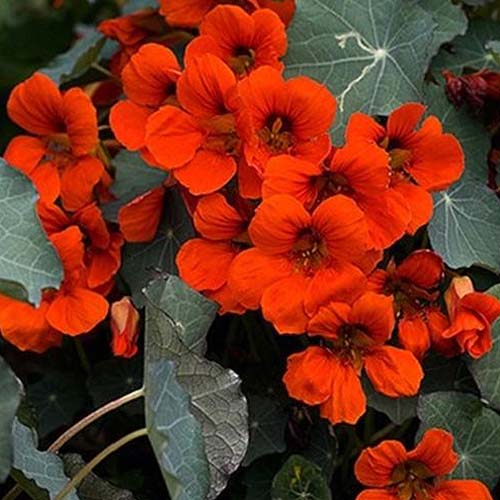
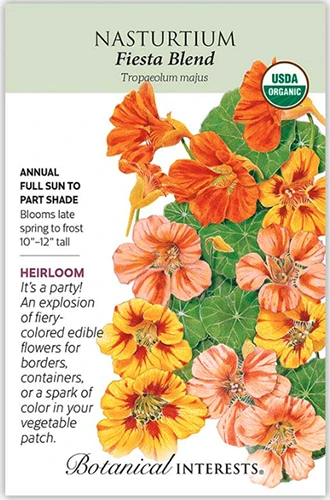
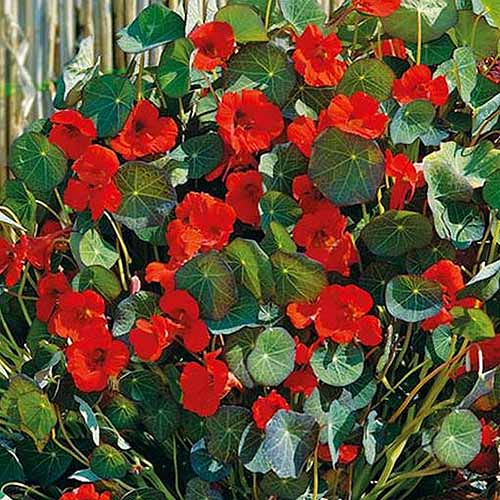
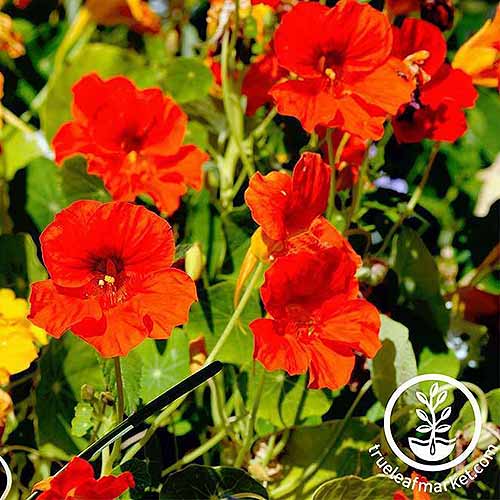
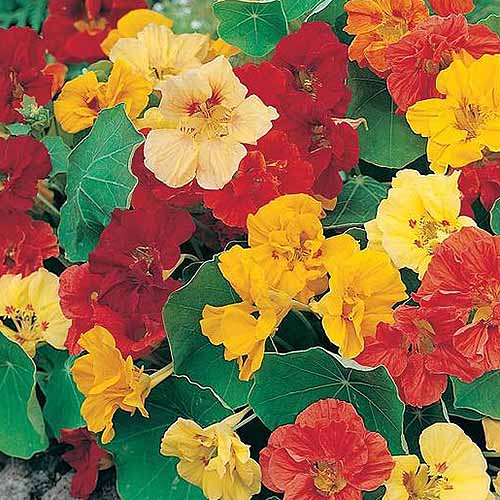
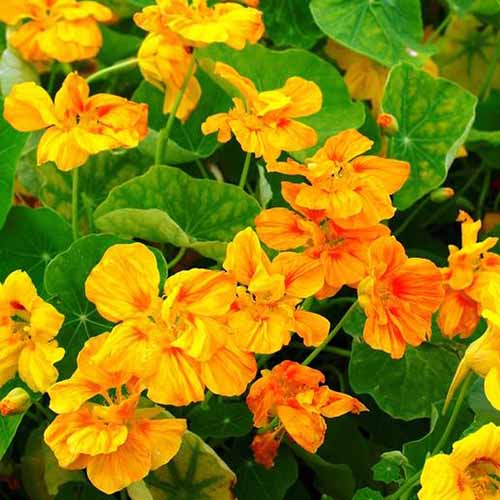
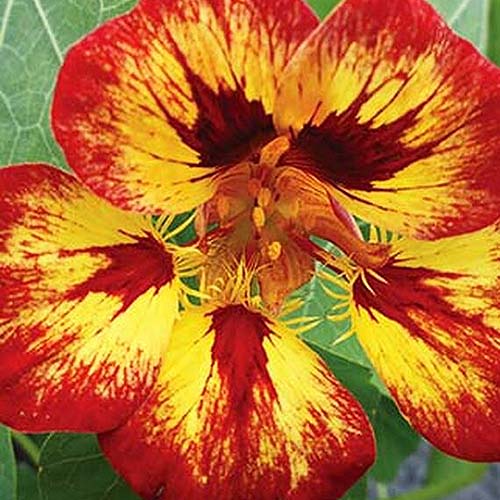
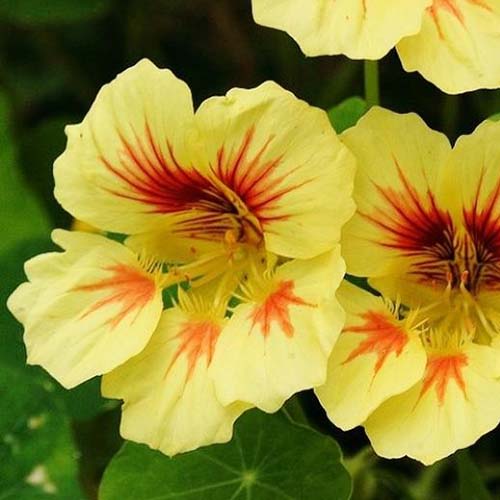

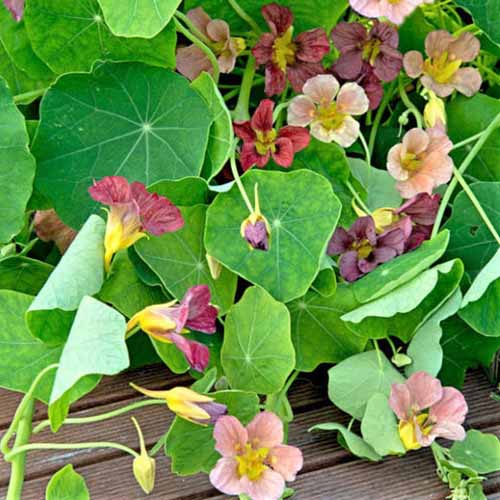

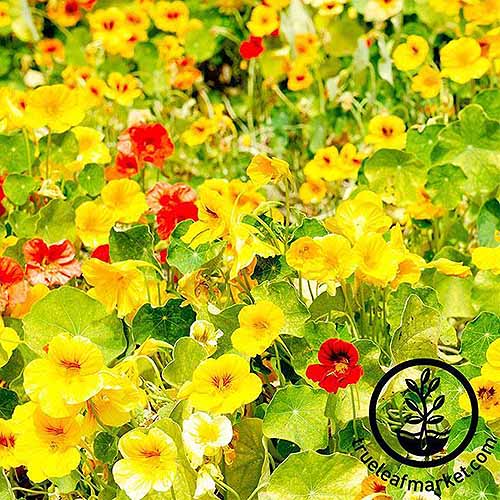
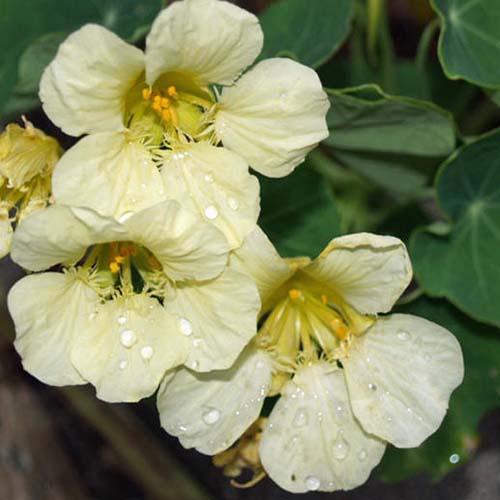
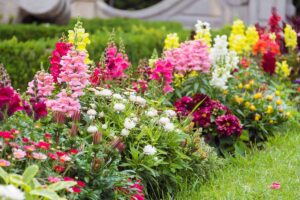
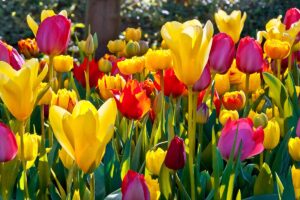
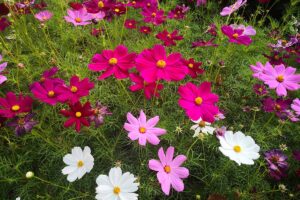
there is something so cheery about these flowers makes me happy just to look at them!
Hi I planted my nasturtium Fiesta Blend the day I began shelter at home (March 9, 2020) in small pots. They leaves are plentiful and healthy but I do not have any flowers. Will they flower indoors or can I transplant in larger container outdoors.
Thanks
Nasturtiums appreciate full sun, and they’re not likely to produce many blooms if they are light-deprived. You could try adding a grow light to your setup indoors, or take your pots outside to a sunny area. An overabundance of nitrogen in the soil can also lead to the growth of lush, healthy foliage without many buds (but the leaves are still good to eat!). Also keep to mind that the “days to maturity” printed on your seed packet can be a bit misleading – these are averages that actually begin on the date when indoor starts are transplanted out to… Read more »
Hello, Would you please recommend edible ground cover varieties of nasturtium that do not climb? Thank you.
Thank you for your prompt reply! ????
Several lovely trailing and bushing-type varieties are suitable for this purpose, described in this article with links to purchase seeds from our trusted affiliates. One cultivar that I particularly like the looks of is ‘Fiery Festival.’ Enjoy the nasturtiums!
Thanks for this wonderful article. I planted some Jewel Nasturtiums and what a beautiful sight. One even grew up, through and out of the evergreen bushes I have. I can’t wait to plant more next year. So my question is when is the best time to buy the seed? If I order now will the seeds be good for next year? I am going to try some Black Velvet and some nice contrasting plants. Again thanks for introducing me to so many types of Nasturtiums.
You’re welcome, Richard! My advice as to when to purchase seed would depend in part on where you’re gardening. In my neck of the woods in southern California, I just purchased some locally produced nasturtium seeds within the past couple of weeks, and planting is recommended in the fall where I live. In other areas with cold winters, planting seeds is recommended in the spring, after all risk of frost has passed. If that’s the case for you, you may want to wait a bit. Most seeds that you purchase in advance will stay viable for a year or so,… Read more »
These are all so beautiful. I have quite a few growing but being patient waiting on flowers.
Saw these gorgeous orange nasturtiums in the photo I just posted and wonder if you might know the name of the cultivar. Love the color and I see they are being trained up done thin poles and clearly thriving indoors. Thank you!
These are beautiful! Looks like the cultivar may be ‘Tip-Top Mix.’
Keep in mind that extra effort may have been put in to get these to bloom so well, such as grow lights, or starting them outdoors and then bringing the planter inside for display. Check out our guide to nasturtium winter care for indoor growing tips.
What a great article, so comprehensive! Thank you! I’ve been growing nasturtium, not sure which variety, for several years in zone 10b. They give me so many beautiful flowers from April-June. However in June it gets hot and they die off. My question is are any of these varieties better in the hot weather? It would be great if they would last thru the summer. Thanks! p.s. to the people who asked about the viability of the seeds, I recently planted 4 year old seeds and almost all germinated fine. I store them in the fridge in plastic baggies, soak… Read more »
Thank you for this great article on so many different nasturtiums! I had only known of a few of these. We grow them every year, as many as I can, as I am a pastry chef and bring them to work for garnish. I also allow the pantry person to use them on salads 😀 We start them indoors in March, with heat mats and lights and transplant after Memorial Day (live in Northern Vermont, that is our safe date) I plant most in the ground, plus a few hanging baskets. They give me so much pleasure. and they last… Read more »